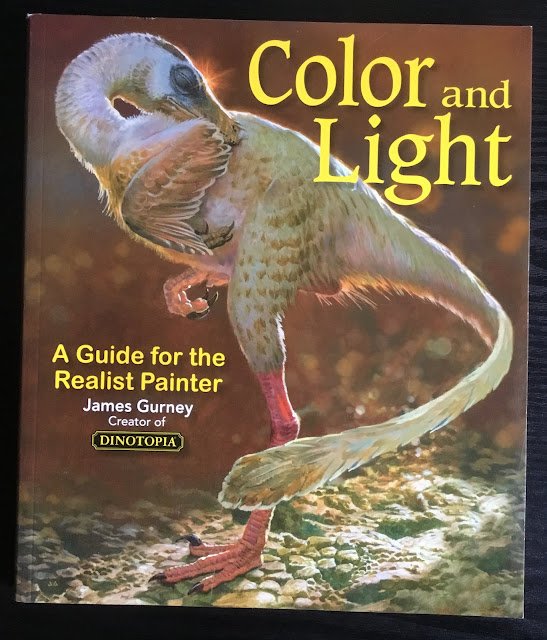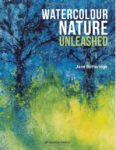This book was going cheap on Amazon the other day and it was on…

Colour And Light: A Guide For The Realistic Painter, James Gurney – Book Review
This might be the last book review for a while as it’s the last of the books from my birthday stash. It’s the James Gurney book that I’ve heard so much about, a very glossy 224-page paperback that always seems to be priced very reasonably.
As you can guess this is all about colour and light. There’s all the usual stuff in there about colour wheels, colour schemes, shadows on snooker balls with the reflected light , etc. But it goes much, much further than this.
The stuff on light was most interesting to me. There’s lots, for example, about the colour of light. Just sitting in a room and looking around, there’s the colour of the light from the electric bulb, the colour coming through the window and lighting up my desk, the light hitting the lawn outside, bouncing through the window and onto the ceiling. And the light that makes the lines between my fingers look red when I hold the back of my hand up to the sun. These lights are all different colours and can all be incorporated into a painting. That’s just a flavour. One of the reasons I was disappointed in that Hazel Soan book on light and shadow was that I was hoping it would go into this level of detail.
And there’s stuff about colour too. Some of this was oil-related rather than watercolour but anybody with any experience will know what also applies directly to watercolour and what needs subtly tweaking. The biggest jaw dropper here for me was James’ colour circle. Rather than the circle with red, yellow and blue evenly spaced, the red/orange/yellow corner is squashed up a bit and the blue area stretched out, leaving red, green and blue evenly spaced around the circle. Red, green and blue are the primary colours in physics, so this immediately appealed to me. One of the things I struggled with in physics was that, while it was easy to see that blue and green should make cyan and blue and red should make magenta, the idea that green and red light should mix together to make yellow was always the devil’s business to me. But when I look at James’ colour wheel, I can see that yellow lies exactly halfway between red and green. I’m wishing I’d seen this colour wheel 40 years ago.
In fact, a common theme in the book is that James likes to give scientific explanations of so many things. Why the sky’s blue, how rainbows work, why distant hills look blue, why we see in black and white when it’s dark, … I could go on forever.
The book’s divided into twelve chapters, although one of these is a historical one, talking about old masters, and another is an appendix with a glossary, reference, lists of pigments, etc. Each chapter, though, is divided into lots of two page spreads, making it an easy book to dip into for just a couple of minutes – the opposite experience to that Kagan McLeod experience where once you start reading there’s no convenient place to stop for the next 100+ pages.
James’ writing style doesn’t ooze passion the way some other writers (like Jean Haines and Ann Blockley) do but it’s definitely not one of those dry dirges at the opposite end of the spectrum. The shiny paper and illustrations and the punchiness of the two page subchapters are enough to keep the reader engaged.
But did I learn anything from this book? Yes. Absolute shedloads. This is a very nuggety book. Rather than churn out the same points that I’ve seen in other books (the approach taken by The Urban Sketching Companion a couple of reviews ago), this is absolutely bursting with hints and tips that I’ve never seen before. Two thirds of the way through the book and I was counting how many pages there were left to go because I’d taken in so much information that I was desperate to open the tap and spill it all out into notes. Making Colour Sing by Jeanne Dobie is the only other book that’s made me feel like this.
Thank you for writing this book, Mr Gurney. I now understand why it’s been praised to the heavens so much. It’s definitely an all time classic. I would only recommend it to quite experienced artists though – those that have already read and understood the bread and butter in other books.
You can find this book and more reviews of it at Amazon UK here. As an Amazon Associate, I earn commission from qualifying purchases but this costs absolutely nothing extra to you.








Leave a Reply